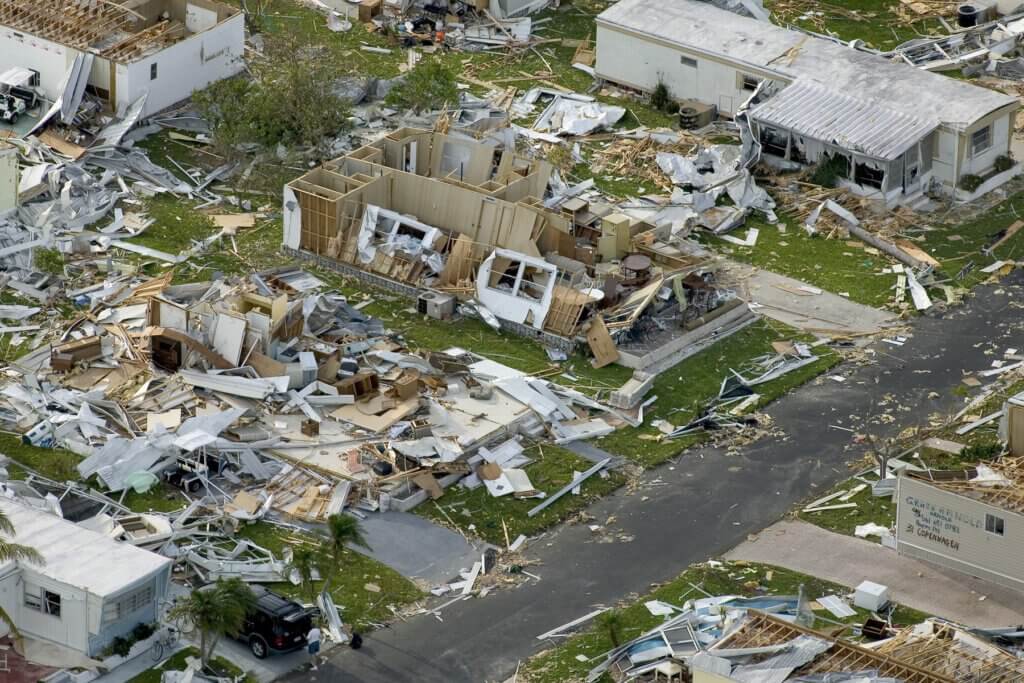
The world’s second largest reinsurer, Swiss Re, shows how difficult the situation is with its 9-month figures. The models signalled different values than reality then produced.
Scary news for reinsurers are not only coming from natural catastrophes at the moment. Because right now they are also watching the central banks, which are raising interest rates – literally by the minute.
But this is when insurers, both insurers and reinsurers, are seeing their equity melt away.
Drastic slump
The write-downs on bonds in particular take their toll, because securities with lower yields are worth less. This then has to be reflected in the companies’ books at market value.
At Swiss Re, the situation is particularly dramatic. According to a media release on Friday, the equity has now slipped to just 11.9 billion dollars. This happened over just a few months from the 23.6 billion dollars at the end of 2021.
As muula.ch already noted in the semi-annual report, half of the equity has literally disappeared.
Reality different
In its media release last Friday, Swiss Re nevertheless speaks of a “very strong capital position”, which should irritate most people. How can this be?
In its statement the reinsurer focuses on the view of the Swiss Solvency Test (SST). According to this, capital adequacy stood at a ratio of 274 percent as of July 2022.
On the one hand, the most recent interest rate increases were after this date. On the other hand, the model looks economically at the companies. This means that it is not really a problem for insurers – to stay with bonds – if bonds are temporarily valued lower.
Rather, they are intended to cover liabilities on the liabilities side of the balance sheet, and this ‘matching’ is rewarded in the SST.
Change in the portfolio
As a result, Swiss Re prominently mentions in the communiqué that rising interest rates are already helping to offset the impact of increased inflation. “For example, the recurring contribution of our fixed income portfolio increased by approximately 100 million dollars in the third quarter alone,” Swiss Re wrote.
What is meant is that higher interest rates are actually helping the insurance industry make more money on investments again.
The problem, however, is that rapidly rising interest rates too quickly lead to write-downs in fair values before the higher yield is reflected on the books to a greater extent.
Enormous losses
Swiss Re’s third-quarter results do not look good either, due to Hurricane Ian. Certainly, a reinsurer takes a long-term view, and a three-month view is not an accurate fit. However, the Swiss reinsurer does not present a very good picture.
But the question may well be asked as to why the models have not signalled that more natural catastrophes will occur as global warming increases. Actually, the reinsurer should have written such business rather cautiously.
The combined ratio, i.e. the ratio of premiums to costs and losses, deteriorated to almost 120 percent in the third quarter. With the results from the two previous quarters, the Group came to a total of 106 percent.
Strategy missed?
Even with regard to the strategic goal of a normalized combined ratio, the reinsurer was at 96.9 percent in the current quarter and 96.2 percent in total. The target is below 94 percent, because insurers only earn money in underwriting terms if the ratio is below 100 percent.
But the return on equity, another strategic goal of the Group headed by CEO Christian Mumenthaler, was a disastrous -13.2 percent in the third quarter. For the first nine months combined, it was -2.1 percent. The target is +10 percent.
Signal from communiqué
The loss of 285 million dollars for the first nine months resulted after a profit of 1.3 billion dollars in the same period last year. If a group admits something like this in the title of a media release, observers may well be skeptical, because it is usually intended to cover up even greater problems.
And this is exactly what the capitalization shows. However, economic reality often looks different from theoretical considerations.
Ultimately, in the eyes of some observers, the reinsurer will probably have no choice but to strengthen its equity capital in some form. This is because it will hardly be possible to operate the business with a single-digit billion dollar amount. It is, after all, built on capital strength.
Market leader Munich Re has not yet published a report for the third quarter. However, the Munich-based company announced in advance that it had been battered by Hurricane Ian to the tune of about 1.6 billion euros, but that a quarterly profit of 500 million euros was still expected.
No dividend increase
In any case, Swiss Re CFO John Dacey explained at a media conference on Friday that the capital position at the Swiss reinsurer would improve with the change in accounting from U.S. GAAP to IFRS. However, he said in response to a question from muula.ch that a capital increase was not currently planned.
He clearly rejected speculation about a dividend increase. The Swiss Re CFO does not believe that an extraordinary return of capital to shareholders is in the cards, Dacey emphasized.
As far as the model world is concerned, the reinsurer is constantly learning with its more than 100 models. The parameters are constantly being adjusted, the CFO indicated.
10/28/2022/kut./ena.





